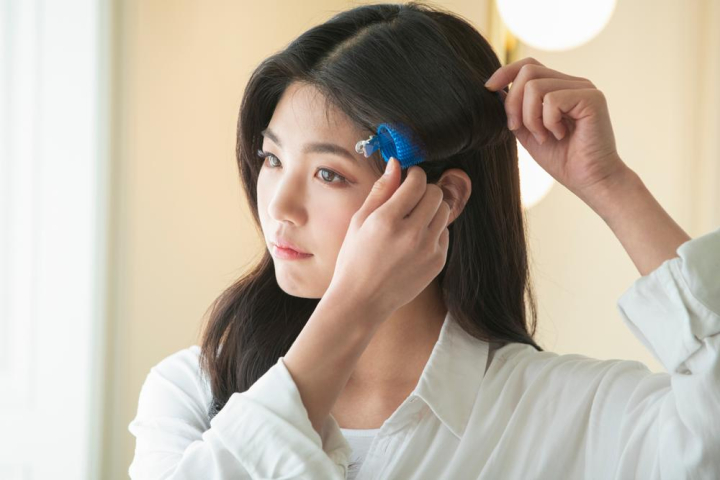Pigmentation Removal Laser Treatment Singapore – Options and Costs
Get your get pigmentation removed and treated by our doctor in our Singapore aesthetic clinic today.
Featured On:





Pigmentation removal and treatment in Singapore are not just for the rich and famous anymore. These days, it’s the norm for people to want to look their best, and that means removing unwanted skin discolouration and other flaws.
And because it’s such a common request, we at Pure Wellness Singapore Clinic have made it our mission to provide you with the latest technology and best treatments available. Our team of experts has expertise in all the latest procedures, including laser therapy and skin rejuvenation. We’ll assess your needs and help you decide what is right for you. And if you’re looking for something more advanced? We’ve got that covered too.
Take a look at this information and knowledge that pertain to pigmentation, its causes, and its cures.
Treatment Options For Pigmentation
Pigmentation is caused by the production of melanin in the skin. Melanin is the pigment that gives colour to our hair, eyes, and skin. When you have pigmentation, patches of skin become darker than the rest of your body. This can happen for many reasons, including:
Sun damage. Sun exposure causes your skin to produce more melanin than it should. Sunburns can also make patches darker.
Hormonal changes. During pregnancy, women often get dark patches on their faces called melasma (also known as chloasma). This is because estrogen levels rise during pregnancy and change the way your skin produces melanin. Women who take birth control pills have a higher risk of getting melasma too.
There are many different types of pigmentation, such as age spots (liver spots), freckles, post-inflammatory hyperpigmentation (PIH), and post-inflammatory hypopigmentation (PIH).
There are several treatment options available for pigmentation, depending on its severity and cause. The most effective treatments target the cause of the pigmentation, whether it’s from sun damage or another source.
Laser Pigmentation Removal
Laser pigmentation removal is one of the most effective ways to treat pigmentation on the face or body, and is a popular treatment used by aesthetic clinics and doctors. A series of treatments with laser equipment is required to eliminate dark spots and freckles. The procedure involves the use of a laser that emits light at specific wavelengths to target pigment in the skin.
The results of this treatment are long-lasting, but it can take several weeks for patients to see results from their treatments. This procedure may require several sessions before complete removal occurs.
Chemical Peel
Chemical peels may also help reduce unwanted pigmentation on the skin. These chemical solutions work by removing layers of damaged skin and revealing new, healthy tissue below. There are three different types of chemical peels: superficial (facial), medium depth (facial), and deep (body). These solutions remove dead cells from your face or body while stimulating new cell growth at the same time.
This treatment involves removing dead skin cells from the face to reveal a brighter complexion underneath. It is best suited for people who have fine wrinkles or blemishes on their skin but not for those with severe pigmentation or acne scars. The procedure involves applying a chemical solution to the affected area of the skin and then using an enzyme peel to remove it after some time. The procedure may be painful depending upon which chemical peel you choose.
Laser Peel (Skin Resurfacing)
Laser peels use laser energy instead of chemicals to remove damaged layers of skin so that new layers can grow back in their place — similar to what happens during a chemical peel. During this type of procedure, the laser heats up beneath the surface of your skin and pulls away damaged tissue while leaving healthy tissue intact beneath it. This type of treatment may be appropriate if you have mild skin damage or fine wrinkles around your mouth or eyes but not severe damage throughout your entire face or neck area.
Pico Laser Treatment
Pico laser treatment is a non-invasive procedure that uses light energy to treat pigmentation problems. The pico laser emits pulses of light that penetrate below the skin’s surface to target pigment-producing cells called melanocytes at their root base. The laser energy damages these cells, so they stop producing more melanin, which causes skin discolouration. The pico laser is extremely safe, painless, and effective in treating pigmented skin lesions on any part of the body. This treatment can be used as a standalone treatment or in combination with other cosmetic procedures like facial peels or microdermabrasion to further improve skin texture and tone.
Intense Pulse Light Therapy (IPL)
This procedure uses a light source that is similar to that used in laser hair removal and skin rejuvenation treatments. The light source emits pulses of energy that target and destroy skin pigment cells. IPL devices use intense pulses of light to destroy small blood vessels within the skin without damaging other tissue or causing burns.
IPL devices are designed to target small vessels that are close to the surface of the skin (the “capillaries”). These vessels carry red blood cells through your body. Red blood cells carry oxygen throughout your body, so when they break down, your skin may become lighter in colour than it normally would be without treatment.
Microdermabrasion
Microdermabrasion uses small crystals to gently remove dead skin cells from your face, neck, and chest. This treatment can help reduce the appearance of fine lines and wrinkles as well as lighten dark spots on your face caused by age spots or melasma (chloasma). Microdermabrasion can also be used to treat acne scarring.
Creams For Pigmentation
In addition to over-the-counter creams that you might use at home, there are prescription creams that can help lighten dark spots on your face caused by age spots or melasma (chloasma). These products contain bleaching agents such as hydroquinone or kojic acid that work by inhibiting melanin production in your skin.
Treatment cost
Pricing for treatment depends on the recommended procedure for your condition and can range from $300-2000.
Picoway laser starts from $500 per session.
How Many Sessions Does It Take To Remove Pigmentation?
There is no one-size-fits-all when it comes to the number of sessions needed to remove pigmentation. This is because each person’s skin is unique and will respond differently to a treatment.
Some people are able to see a significant difference in their skin after just one treatment, while others may need several treatments before seeing any results.
The average number of sessions for treating pigmentation ranges from three to six sessions, but this can vary depending on the severity of your condition.
What Causes Pigmentation?
Pigmentation is caused by the overproduction of melanin, which is the pigment responsible for skin colour. It’s a normal process that occurs as a response to stress and other environmental factors, such as sun exposure. Pigmentation can also be triggered by hormonal changes or medical conditions such as acne, eczema, rosacea, and melasma.
Pigmentation can also be caused by genetic disorders like vitiligo and albinism. Vitiligo causes white patches on the skin; albinism causes loss of skin pigmentation.
Different Pigmentation Skin Conditions
The following are the most common types of skin conditions caused by pigmentation:
Melasma
Melasma is a type of skin discolouration that occurs most commonly on the face, but it may also develop in other areas of the body. It is commonly known as the “mask of pregnancy” because it commonly appears during pregnancy. Melasma is more common in women than men, and it’s not related to sun exposure.
Lichen Planus Pigmentosus
Lichen planus pigmentosus is a condition where patches of brown or black discolouration appear on your skin. These spots may be flat or raised, and they can range from small to large in size. Lichen planus pigmentosus usually appears on the face and neck, but it can occur on other parts of your body, such as your arms and legs too.
Tinea Versicolor
Tinea versicolor is a fungal infection that causes small white or yellow spots on the skin. These spots are often itchy and scaly and may be found on other body parts besides your torso and back, such as your arms or legs.
Freckles
Freckles are small, flat, tan, or brown spots that usually appear during the summer and fade in the winter. They may be a mixture of brown and black or just one colour. Freckles are common in people with fair skin who have a family history of freckles or sun sensitivity.
Freckles are caused by melanin, the same pigment that causes tanning and darkening of the skin. People with freckles have an overabundance of melanocytes (the cells that produce melanin) in the skin. The excess of melanin causes the skin to darken when exposed to sunlight.
What Is Post-Inflammatory Hyperpigmentation?
Post-inflammatory hyperpigmentation, also known as PIH, is a condition that occurs when there is inflammation of the skin. The inflammation is caused by a number of things, but most often it is caused by acne or sun damage.
The result is a brown discolouration that can appear on the skin and take up to a year to go away. The discolouration can be anywhere from small spots to large patches of brown on the face or body. The condition most often affects people with darker skin tones, but it can affect anyone.
Can Skin Pigmentation Be Removed Permanently?
The short answer is yes. Skin pigmentation can be removed permanently, but it is a complicated process that requires several steps to achieve the desired result.
First, you will need to visit a dermatologist or aesthetic for a skin evaluation and treatment plan. The dermatologist/doctor will perform tests to determine your skin type and determine if there are any underlying causes for your skin discolouration. For example, if you have melasma (skin discolouration caused by hormonal changes), then your dermatologist might prescribe birth control pills or another medication that can help treat the condition.
Next, the doctor/ dermatologist will perform laser treatments to remove the pigmentation. These treatments are safe and effective as long as they are performed by a qualified professional who has experience performing them on patients with similar skin types.
Finally, once all of the visible pigmentations have been removed (this may take multiple sessions), then it’s time to consider other options, such as chemical peels or microdermabrasion, which can help improve skin texture and tone while also removing any small patches of remaining pigment if necessary.”
